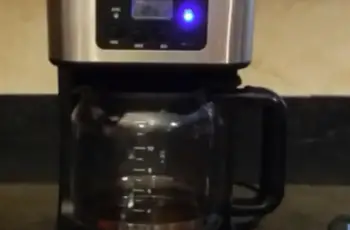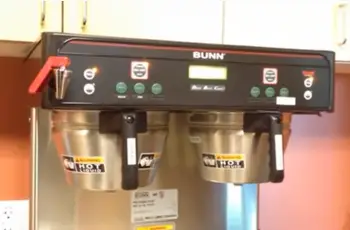Most people who can’t do without their daily dose of caffeine kick off their day with a familiar friend – the coffee machine. Each morning, you scoop coffee into the appliance, fill it with water, and switch it on, but have you taken a moment to think about the magic happening inside? How does the water move from the tank to mix with the coffee grounds in the filter holder? What’s behind that bubbling sound, and how does it all get hot so fast?
In this post, we’ll take a peek inside a standard drip coffee maker so you know precisely what’s going on when you make coffee. We’ll also look at the potential issues that might cause your coffee machine to break down. By the conclusion of this essay, you may see your old buddy in a whole new light.
Inside A Coffee Maker
A contemporary drip coffee maker is a fairly basic piece of equipment. Manufacturers have had more than 30 years to refine their designs, so when you open them up, these coffee makers are relatively basic.
When you remove the top of the coffee machine, you’ll notice three things:
- When you pour water into the pot at the start of the coffee-making cycle, a reservoir stores it. There’s a hole in the bottom of the bucket, and its purpose will become clear in a moment.
- A white tube rises from beneath the reservoir base, bringing hot water to the drip region.
- There is a showerhead. Water is sprinkled over the coffee grinds from the white hot-water tube. In certain coffee makers, the water flows out of the hose onto a perforated plastic disc called the drip area and actually falls via the perforations into the coffee grinds.
The Heating Element Of Coffee Makers
- The resistive heating element is essentially a coiled wire that gets heated when electricity is passed through it, comparable to the filament of a light bulb or the element in an electric toaster. The coil of a resistive element like this is placed in plaster to make it more robust. The heating element performs two functions:
- The heating element warms the water when you first put it in the coffee maker.
- When the coffee is ready, the heating element keeps it warm.
How To Make Coffee
Have all of these coffee-related discussions whetted your appetite? So, here’s how a drip coffee maker converts a handful of coffee grounds and a couple of glasses of water into a boiling hot cup of Joe.
As you can see, a coffee maker is about as basic as an appliance gets. This is how it works:
- When you put cool water into the reservoir, it runs through the opening and into the orange tube.
- The water then passes through the one-way valve, into the aluminum tube in the heating element, and partly up the white tube. Because of gravity, all of this occurs naturally.
- When you turn on the button, the resistive heating element begins to heat the aluminum tube, and the water in the tube finally boils.
- When the water boils, the bubbles in the white tube rise to the surface. What occurs next is identical to what happens in a standard aquarium filter: The tube is tiny enough, and the bubbles are large enough, that a column of water may ride up on top of them.
- Water runs up the white tube and is distributed evenly over the waiting coffee grinds.
- The hot water runs over the ground coffee beans, absorbing their oil essence as it descends into the coffee pot. Caffeoyl is the name given to the coffee oil that is released during the roasting phase.
Doesn’t that sound like a no-brainer? By the way, this boiling-water pump is the identical mechanism that powers a percolator-style coffee maker. As you can see, there is no mechanical pump of any kind, nor are there any moving parts. As a result, coffee machines are highly dependable.
Conclusion
Many digital coffee makers also let you alter the brew strength; if you desire a stronger cup of coffee, the brewing time slows to compensate. Some feature self-cleaning cycles and filtering systems as well. Freshness counters can tell you how long a pot of coffee has been lying out, and automatic shut-off functions can put your mind at ease if you forget to switch off the coffee maker before leaving for work.



